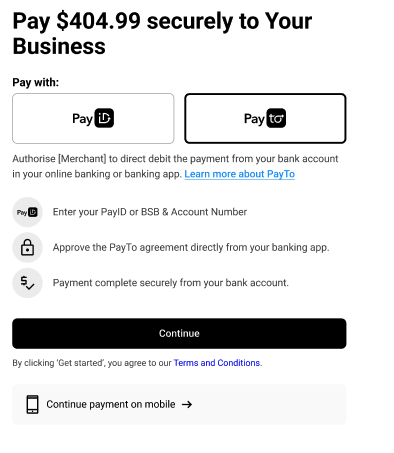Some merchants - such as subscription or membership based businesses - need the flexibility to collect a customer’s next recurring payment slightly before the current billing period officially ends. Previously, the Azupay PayTo payment initiation logic required the full period (e.g., 12 months) to pass before another payment could be processed. This caused issues for some merchants, who collect renewal fees a few days before the annual term expires.
To address this, we have enhanced our Pay & Subscribe UX solution to allow merchants to process one additional payment within the same billing period for eligible agreement types. This ensures smoother renewal experiences and removes unnecessary payment initiation failures.





